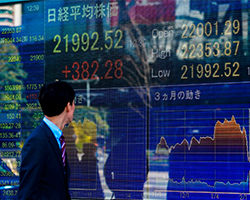Best Stock Trading Strategies: A Complete Guide

Finding beneficial strategies in the stock market is not easy. One of the proven ways is to look for stock market anomalies. A stock market anomaly is a rate of return or investment strategy that seems to disprove the efficient market hypothesis. Today, most investors agree that markets are quite efficient, even if they do not believe in a pure form of market efficiency. But the belief that markets are not completely efficient has led many professionals to look for new market advantages and disadvantages. In fact, the last 20 years or so have witnessed a dramatic increase in research on stock market strategies and anomalies. No doubt, most of you love testing and reading about new strategies, and in this article, you'll learn about some of the most interesting and well-known strategies out there.
The Importance of Trading Strategy in the Stock Market
Trading and investing strategies are divided into simple and complex ones. The most cunning ones are related to the use of trading robots, the opening of 2 brokerage accounts with mutual hedging, and simultaneous entering into a long and short position. In practice, it is easier for beginners to settle on one (preferably simple) method.
When it is mastered and beneficial, one can try a trading strategy, gradually developing skills. To begin with, it is better to concentrate on preserving one's deposit and, having learned it, not to lose it by choosing a trading strategy with minimal risk. Consistently pursuing a trading strategy will lead to the desired result in the form of financial independence.
The market is not a charity. Others will do anything to lure your capital by manipulating the news and excitement. It takes consistency and internal investor discipline to prevent this from happening.
How a Strategy Distinguishes a Speculator from an Investor
When investing in the stock market, you choose your own trading strategy based on your own interests, the size of your deposit, and circumstances. According to the style of work, it is accepted to make a distinction:
- Investors
- Speculators
Investors buy stocks for a set time, expecting to secure gains on the upside. They are distinguished by playing the long game and even deliberately ignoring the price fluctuations inherent in any market.
For the speculator, the long-term price outlook is irrelevant; they are interested in earnings here and now. The holding period for a stock after purchase does not exceed a week. The lion's share of such transactions is mostly based on technical analysis.
Classification of Speculators
In turn, speculators differ in their trading styles by applying certain trading strategies.
Scalping - a trading strategy, which is based on the difference between the buy and sell price. Scalper buys stocks at the bid price and immediately opens a sell position, specifying the bid price. An indispensable condition of the scalping trading strategy is a calm market. There must be no sudden upward spikes or breakdowns.
A swing trading strategy involves holding a position in a time frame of more than one day. Accordingly, a stock is purchased at the low point and sold after the price rises. The most popular tools of swing trading strategy are liquid assets, which quickly turn into capital.
Intraday. The speculator never moves the position to the next day. Most often, volatile financial assets with large fluctuations are chosen for trading on this strategy, and the total duration of the transaction is often several minutes. Very often intraday trades involve leverage trading.
Classification of Investors
Like speculators, investors fall into several categories.
The long-term investor makes investments over several years. Usually, it is a fundamental analysis, when planning goes with many factors, from the economy to the political situation. Everything is added up, such as forthcoming elections, the rise or fall of the country's GDP, new markets, oil prices, and wars. If the technical analysis is applied, it is done in a monthly or weekly time frame.
The medium-term investor invests for a period of several months to a year. Technical analysis is mainly used. This option of trading on the stock exchange assumes a cash bonus (dividends) in the middle or at the end of the year
The short-term investor opens a position for a period of up to several weeks, focusing on the daily and hourly time frames.
How to Choose a Trading Strategy
Both traders and investors always say that the choice of trading strategy should be determined depending on your financial goals, trading style, and your life circumstances. The deposit volume, the timing of the returns that the investor is focused on, the amount of potential gain, and the general occupation are all taken into account.
A person, whose daily earnings depend on trading on the stock exchange, resorts to short-term investments and speculations. A trader, for whom trading is only one of the sources of income and capital growth, uses medium- and long-term ways.
Basic Stock Trading Strategies
The January Effect
The January Effect describes the tendency for small-cap companies to outperform large-cap stocks during January. This is a well-known anomaly that has been discussed in numerous journals and research articles as early as 1942 by Sidney Wachtel. Another study by Roseff and Kinney examined data for the period 1904-1974 and found that market returns in January were five times higher than in any other month. Since then, there have been many studies with differing views on the effectiveness of the strategy in recent times. Some scholars suggest that the effect has diminished in recent years as more investors became aware of the anomaly. Others suggest that the anomaly has simply shifted to December. As more people become aware of the market anomaly, it makes sense that more investors try to anticipate the trade, and it either switches to an earlier time or is eliminated by arbitrage.
Explanation:
Possible explanations for this anomaly are tax loss harvesting, demonstration (accounting), and investor psychology.
Strategy:
You can capitalize on this anomaly by opening a long position in a basket of small-cap stocks while simultaneously selling a basket of large-cap stocks during January. This can be achieved by using E-Mini futures or ETFs. You can start trading in late December as the effect seems to come earlier and earlier each year.
The Weekday Effect
The weekday effect is also known as the Monday or weekend effect, and it describes the tendency for stocks to perform worse on Monday than on other days of the week, especially Friday. This anomaly has been described in several academic studies and analyzed in various international markets, but it is one of those anomalies that are hard to rationalize. One possible explanation is that investors become more optimistic as the weekend approaches and more pessimistic on Mondays. However, it could also be a case of HARKing (making hypotheses after the results are known), which should be avoided. Some scholars attribute the weekend effect to the anomaly of the early-month effect. Others suggest that the weekend will bring more bad news and more companies will report negative gains after the close of trading on Friday. Perhaps another explanation is that more short sellers are closing their positions on Fridays and rebuilding them on Mondays to avoid any upside risk over the weekend when the markets are closed. However, some suggest that the anomaly is not significant and is probably the result of intelligent data analysis.
Strategy:
When forming trading strategies/portfolios, you should be aware of the theory that stocks tend to fall on Monday compared to other days of the week. You can use this information to filter out trades and develop trading rules based on those days of the week.
Monthly Pivot

This anomaly refers to the upward trend in stocks during the small window between the end of the month and the beginning of the next month. According to Eddy Elfenbein, most of the S&P 500's equity gains came during the seven-day window at the beginning of the month. Specifically, the last four trading days of the previous month and the first three days of the following month. This anomaly has also been documented by Ariel, Fosback, Merrill, and others. Ziemba also finds that the anomaly is present in international markets, especially in Japan. In The Handbook of Equity Anomalies, the authors agree with Ziemba and show that the anomaly still exists, albeit with some anticipation.
Explanation:
There are several rational explanations for this stock market anomaly. The most popular is that because most paychecks are paid closer to the end of the month, investors tend to put their funds into the market at this time, and this causes stock prices to rise. Other explanations include portfolio conversions and rebalancing on day -1, pension fund investment moves, and brokerage firms that realize sales jolts closer to the end of the month (to meet sales targets).
Strategy:
You can lock in gains from the monthly pivot by opening a long position in the stock indices three to four days before the end of the month and closing the long position seven to eight days later.
Holiday Effect
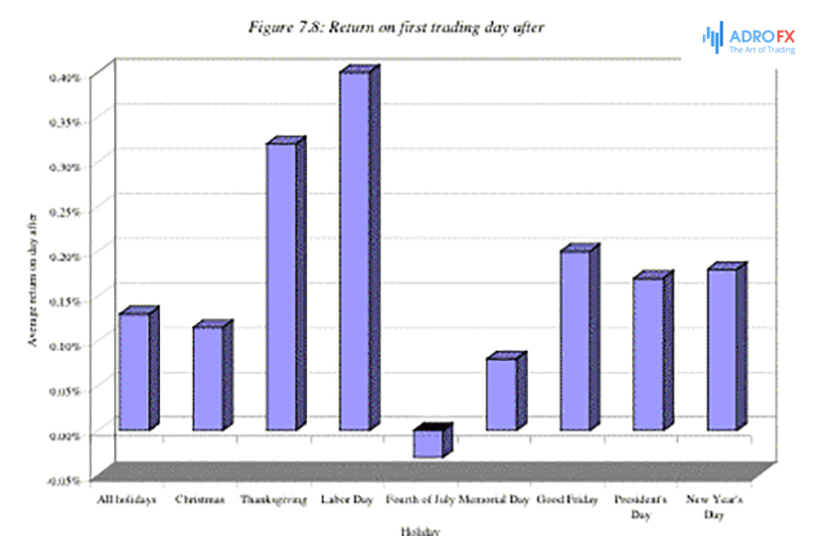
The holiday effect shows that stocks tend to rise the day after the weekend. One explanation for the holiday effect is that the market rises enough to make up for a lost trading day. However, this theory contradicts what happens when markets reopen after the weekend, known as the Monday effect. An alternative explanation for the anomaly is that investors return to their desks in a more optimistic mood and hence, are more likely to buy stocks. Another idea is that while U.S. markets are closed for the holidays, foreign markets are directionless and less liquid. They tend to drift upward, which leads to a higher U.S. market opening the day after the holiday. Of course, as with all the market anomalies we discuss, there is also the possibility of data mining or natural variance. Just because a market anomaly has worked in the past does not mean it will continue in the future.
Strategy:
You can buy stock index futures or stock baskets at the close of trading before the weekend in the market. You can then exit at the close of trading on the next full day of trading to secure gains from the holiday effect.
Time-of-Day Effect
Traders know that most trading volume occurs at the open and close, while the late morning and early afternoon sessions are relatively quiet. Trading after hours is usually a dangerous idea for intraday traders. An old study by Harris (1986) also found a time-of-day effect and showed that stocks tend to rise in the first 45 minutes of trading, except on Mondays. Also, stocks are more likely to rise closer to the close on all days, especially small-cap stocks. In addition, there have been studies demonstrating an immediate effect. One study showed that investing in the S&P 500 only during the overnight session yields higher returns with less risk. The explanation for the overnight anomaly is that companies release more important information after the market closes, and this is what drives the markets the most.
US100 gains at the beginning of the previous three trading sessions.
Finally, there is evidence from Haoyu Xu that postulates that stocks exhibit momentum effects in the morning and reversal effects in the afternoon. In other words, if a stock was declining in the morning, it could turn up in the afternoon and vice versa. The explanation for this is that morning trades are likely to be information-based, whereas afternoon trades are liquidity-based and institutional trades prevail. The conclusion for intraday traders is to focus on momentum strategies in the morning and reversal strategies in the afternoon.
Strategy:
You should be aware that markets behave differently at different times of the day, and you can use this information to create filters for intraday trading or timed entry. The last hour and night session often have the most positive price movements. Also, you should favor momentum trades in the morning and reversals in the afternoon.
Santa Claus Rally
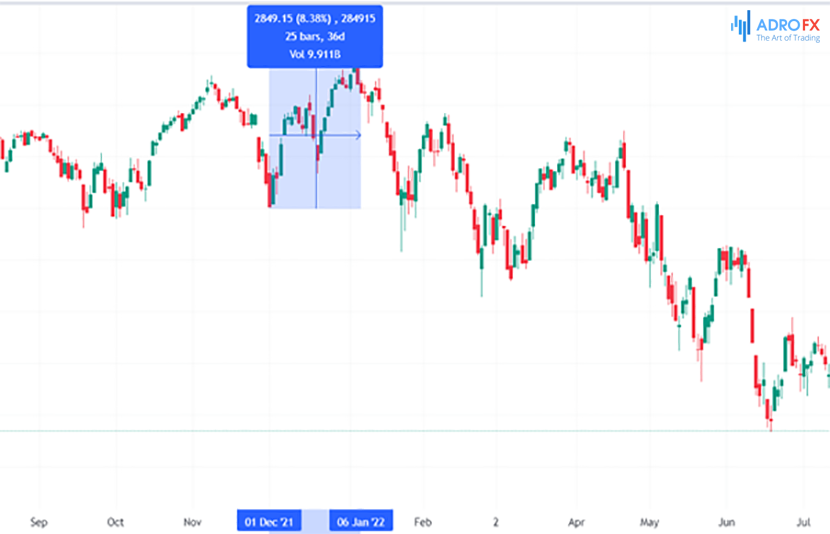
The Santa Claus Rally is the upward trend in stocks during the holiday season between Christmas and New Year's Eve. According to Business Insider, the Dow Jones Industrial Average rose an average of 1.7 percent during this period, rising 77 percent in data since 1896. There are several reasons for this anomaly, as it is also a combination of several other known effects. The period is associated with several market holidays, the month turnaround effect, and the year turnaround effect combined. Thus, this anomaly can be explained by a combination of these factors as well as investor psychology (holiday optimism). Finally, the lack of liquidity during this period could also be one of the reasons for the upward price drift.
DJI 8% gain from 12/01 till 01/06
Strategy:
You can buy index futures or stock baskets on the first trading day before Christmas and hope to exit the trades on the first trading day of the new year. This trade works especially well if the market falls in the run-up to Christmas.
Sell in May and Go Away
This is an old trading cliché and a calendar effect anomaly that explains the tendency for stocks to deteriorate between May and October. Consequently, investors can perform better by holding stocks outside this window. This anomaly has shown more positive results outside the U.S. than in the U.S. The numbers show good results from June through August, with the lowest results coming in September and October. However, different date ranges show a very different spread of returns, highlighting the danger of basing stock market strategies on small sample sizes. This anomaly is unlikely to be based on any market truth and is more likely the result of natural fluctuations in monthly returns. This anomaly is also difficult to exploit because it means tying up capital for a long period.
Strategy:
This anomaly should not be influenced by itself, but it can be useful as part of a broader composite indicator. For example, using this approach as one of the ranking factors in a market timing strategy.
Price-Based Stock Trading Strategies
Momentum Effect
Momentum (also known as trend following) has been described as one of the most consistent stock market strategies. The basic premise is that a moving stock tends to stay in motion, and investors can capitalize on this phenomenon to generate above-average market returns.
One of the first studies of momentum was done by Jagadish, who measured the dynamics of stock prices based on three to twelve-month moving returns. Jagadish discovered that the stock with the highest 12-month return continued to outperform the market over the next 12 months, and similar results were obtained with monthly intervals of up to three months. Other successful momentum strategies have been published that include proximity to 52-week highs and entries using Moving Averages. Park's paper showed that sorting stocks based on the ratio between the 50-day Moving Average and the 200-day Moving Average provides a monthly return of 1.45% with a 6-month holding period. The idea is that you divide the 50-day Moving Average by the 200-day Moving Average and open a long position in the stocks of the top decile (winners) and a short position in the stocks of the bottom decile (losers). Several studies have concluded that when trading on momentum, it is wise to ignore the last month in the calculation because the last month tends to show a price reversal instead. In the case of the 12-month Jagadish momentum, the last month is ignored. Other, more recent studies have failed to discredit momentum as a viable market anomaly, and it remains one of the best market advantages available to conventional investors. One study, which examined the overall earnings potential of 447 market factors, found that up to 85% were negligible and were probably the result of biased testing on historical data. However, momentum factors were often cited as some of the most significant of the 447 tested. Momentum also has a long history of good results.
Strategy:
There are many different strategies that investors can use to exploit momentum anomalies over different time horizons. Momentum systems can be based on Moving Averages, breakouts, and monthly returns.
Reversal and Average Returns
Studies have shown that momentum works best on a time horizon of 3 to 18 months. Less or longer, you are more likely to see a reversal, which can also be described as a return to the mean or a regression to the mean. One study by De Bondt and Thaler (1985) found that the largest losing stocks over three to five years had higher average returns over the next three to five years. Meanwhile, the biggest winning stocks had lower average returns. In other words, they found a persistent return to the average over a period of three to five years. Additional research has shown that a return to the mean can also occur at much lower time frames. In a study by Dunis et al authors found that reversals usually occur overnight after a significant price drop. Other studies have shown price reversals over one month. Changes in the mean of fundamental data such as earnings and accruals, intraday data, volatility, and the effects of short selling have also been documented. As with momentum, numerous studies have been done in the area of reversal and return to the mean.
Strategy:
Strategies for returning to the mean include looking for unusual price extremes that can return to more normal levels.
Stock Market Strategies
Size Effect
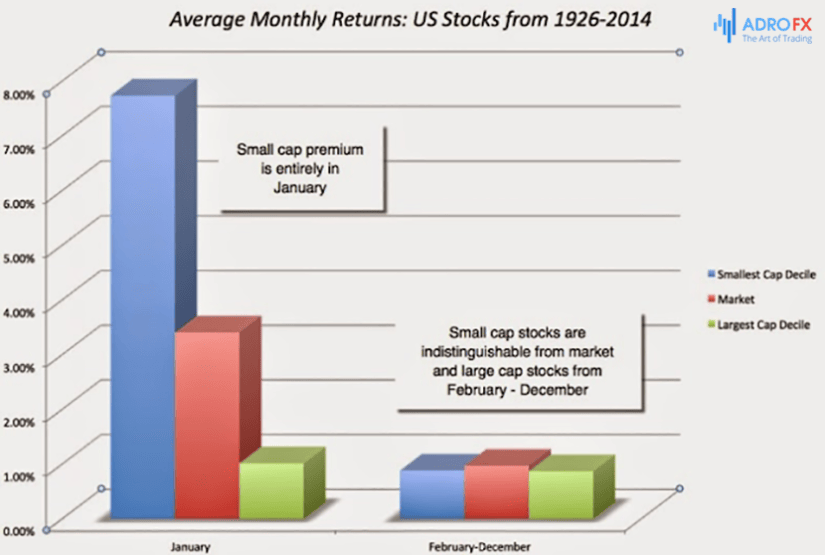
The size effect, also known as the small firm effect, is simply the tendency for small-cap stocks to outperform large-cap stocks over time. Here, small-cap stocks are generally referred to as companies with a market capitalization of less than $2 billion.
Explanation:
One explanation for the size effect is that small-cap stocks are simply riskier than large-cap stocks. Consequently, they should have a higher rate of return. Another explanation is that small-cap stocks can grow faster than larger companies, which may be constrained by their own level of success. However, the size effect has been questioned by some researchers, who say the anomaly is erratic, concentrated among microcaps, and strongest in January.
Strategy:
There is evidence that the small firm effect has waned. Nevertheless, investors can still thrive by choosing small capitalization with better earnings. In addition, the small firm effect is clearly more pronounced in January. You can buy baskets of small-cap stocks and sell large-cap stocks at the same time if you are looking for a market-neutral approach.
Value Effect (Book-to-Market)
The value effect is commonly referred to as the book-to-market effect and goes back to the famous value investor Benjamin Graham. This anomaly has also been discussed by many famous researchers, including Basu, Titman, Fama, and French. A seminal paper by Fama and French in 1997 showed a 7.6% difference in average return between high and low book value stocks, and that securities outperformed growth stocks on 12 of 13 major indices.
What is book-to-market?
A book-to-market anomaly compares a company's book value to its market price. Consequently, the greater the ratio of the book-to-market value of assets, the cheaper the company is on a purely fundamental basis. For example, if a stock has $100 million in real assets, but its market capitalization is only $80 million, the B/M ratio would be 1.25 (100/80). So you could say that the stock is trading below its book value and is basically cheap. If you were to shed the company and liquidate all the assets, you would get more funds than the current market value (assuming the assets are valued correctly). The book-to-market effect is one of those anomalies that makes logical sense and has a good history of superiority, which contradicts the efficient market hypothesis.
Explanation:
Explanations for this anomaly are mostly behavior-based. For example, one reason is that investors overpay for growth stocks with compelling histories, and valuable stocks are overlooked and undervalued. Investors take past performance into account when making investment decisions. Another explanation is that stocks with high book valuations are often distressed companies and entail higher investment risk. The obvious drawback of the market book anomaly is that it only accounts for one variable. Famous value investors, such as Warren Buffett, would say it's better to view the book-to-market ratio as simply part of a much larger puzzle.
Strategy:
You can calculate the book-to-market ratio of a stock by dividing the total book value of the stock by the market capitalization of the stock. You can then scan the high book value stocks and use them as the basis for further research. You can also create a market-neutral portfolio by taking a long position in a stock with a high valuation in the market and a short position in a stock with a low valuation in the market.
P/E Ratio Anomaly
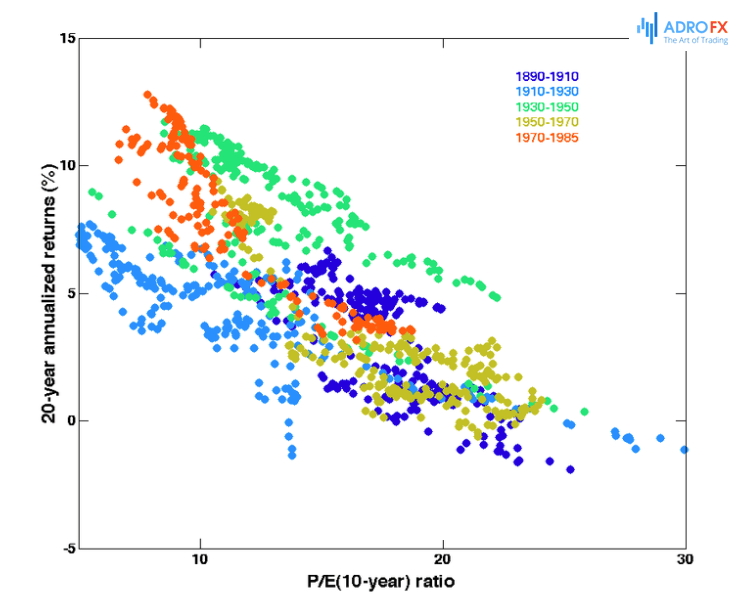
The P/E ratio effect suggests that stocks with a low P/E yield higher risk-adjusted returns than stocks with a high P/E. This is another classic value investing anomaly that value investors such as Warren Buffett, Joel Greenblatt, and Howard Marks have supported and that researchers including Basu and Schiller have written about. The key to the P/E ratio is how it reflects investor sentiment. If a stock has a high P/E ratio, its price is high relative to recent earnings. Therefore, investors expect these stocks to grow faster and generate higher returns in the future. Meanwhile, stocks with low P/E ratios are cheaper compared to recent earnings, and investors are less optimistic about growth. Low expectations are easier to overcome, so a low P/E ratio can indicate an undervalued company and a good investment opportunity. The P/E ratio is a noisy signal, but its effectiveness has been studied many times. Professor Schiller did one of the most famous studies of the P/E ratio and showed a clear correlation between low P/E and forward earnings.
Strategy:
According to this anomaly, you should prefer low P/E stocks when building your portfolio to benefit from this value premium. You can build a market-neutral portfolio by opening a long position in the stocks with the lowest P/E and a short position in the stocks with the highest P/E.
Closed-End Fund Discounting Anomaly
If one were to suggest that you buy $1 worth of assets for 80 cents, you would think this possibility was too good to be true. However, this is exactly what can happen in the case of closed-end funds, which typically trade at significant discounts or premiums to their net asset values. As a result, the closed-end fund discount has been called "one of the most puzzling stock market anomalies in finance." An example of the CEF anomaly was even discussed in Burton Malkiel's book, A Random Walk Down Wall Street. As a more recent example, consider the case of the hypothetical XYZ fund, which has a net worth of $26.26 per share. However, yesterday the stock opened at $22.47 and then closed at $22.58. That's a discount on a net worth of -14.01%. In other words, you can currently get $26.26 worth of assets for $22.58.
The closed-end fund discount has many subtleties, and many explanations have been put forward for its existence. Some experts suggest that the discount reflects the illiquidity of the underlying assets, management fees, transaction costs, and the difficulty of accurately estimating net asset values.
The key problem with CEF investing is that the discount can persist for years. So even if you find a significant discount, there is no guarantee that you can sell with some yields. It is for this reason that many hedge funds implement return-to-average strategies, using Z-ballots to find CEF discounts that deviate from the average. For example, if a CEF normally trades at a 10% discount to NAV, they will only open a long position if the discount increases and the z-score falls below, say, -2. Finally, another aspect of the closed-end fund discount is its applicability to market timing. Typically, closed-end fund discounts narrow during bullish sentiment and widen during market stress. Consequently, they can be used as a guide to the current nervousness in the markets.
Strategy:
CEFs often trade at a discount to NAV and may be underpriced. However, the discount may persist for some time. You can use return-to-average strategies to open a long position in a CEF when its discount is well below normal levels and expect to benefit when the gap closes. You can also use the CEF discount/premium as a benchmark for market stress and, therefore, help implement market timing strategies.
Best Stock Trading Strategies: Final Thoughts
Today we have gone through a number of stock market strategies, some of which have been used to great effect over the years. Value-oriented companies have made good returns by using P/E ratios and market value balances. Others have succeeded with seasonal fluctuations. However, as with everything in this industry, there is no free lunch, and just because an academic study reports a market anomaly does not mean that it is sustainable, tradable or that it will continue to do so in the future. Often a market anomaly is published that looks good on paper but cannot be realized in real market conditions. Likewise, all researchers have different skill levels and different methods for testing market inefficiencies.
Therefore, it is very important to remain diligent in thinking through and implementing these advantages. Just because you read about a strategy doesn't mean you should trade it. Initially, you should do the work to understand the benefits and see if it meets your own research and standards. Often the best anomalies are those that can easily be supported by a rational explanation, such as human investor behavioral biases. Some published anomalies are easy to test and change and that is what needs to be done. Other anomalies are harder to test on historical data, but you can still test them on real data until you create a decent sample size for evaluation. You can also adapt and combine stock market anomalies and make them your own. The combination of value and momentum is one example. We hope, at the very least, that these stock market anomalies have given you new ideas and inspiration for your next investment strategy.
About AdroFx
Being a well-established brokerage company, AdroFx offers the best trading conditions to its clients from 200 countries. Founded by experts with a couple of decades of overall experience, AdroFx is one of the best platforms on the market for shares trading. Either a newbie or experienced trader, both will find here what they are looking for since the company provides various trading accounts for different trading styles and goals.
